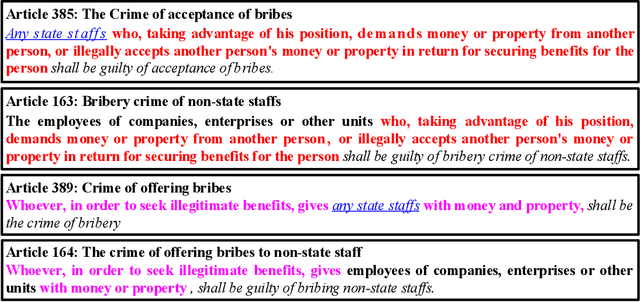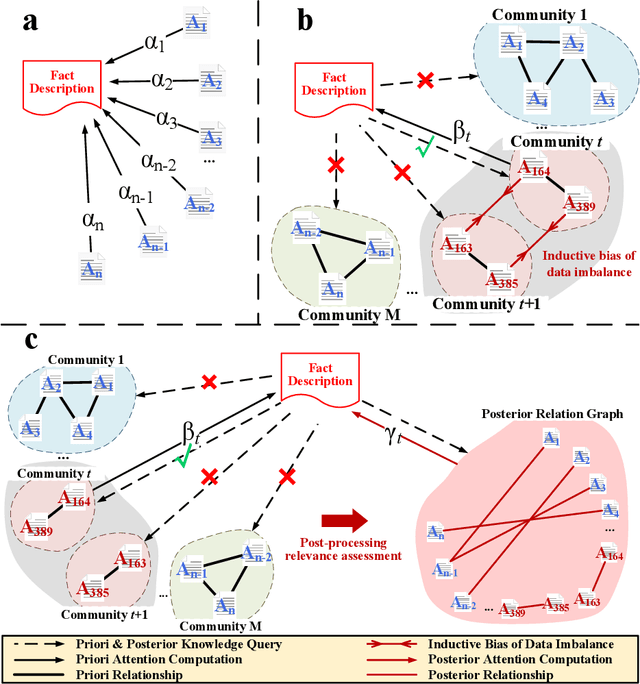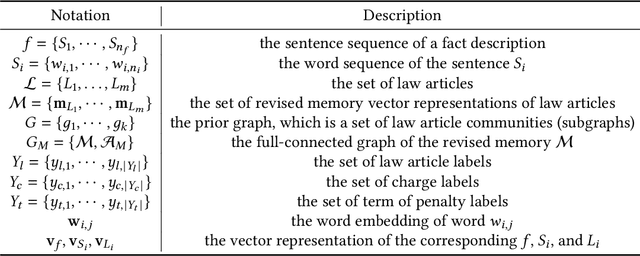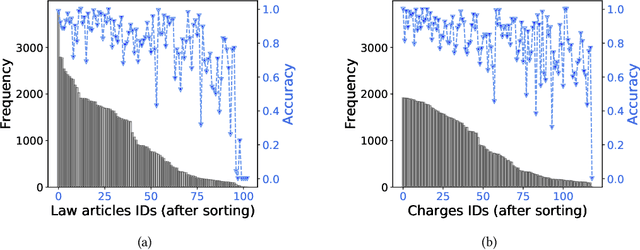Nuo Xu
LaPON: A Lagrange's-mean-value-theorem-inspired operator network for solving PDEs and its application on NSE
May 18, 2025Abstract:Accelerating the solution of nonlinear partial differential equations (PDEs) while maintaining accuracy at coarse spatiotemporal resolution remains a key challenge in scientific computing. Physics-informed machine learning (ML) methods such as Physics-Informed Neural Networks (PINNs) introduce prior knowledge through loss functions to ensure physical consistency, but their "soft constraints" are usually not strictly satisfied. Here, we propose LaPON, an operator network inspired by the Lagrange's mean value theorem, which embeds prior knowledge directly into the neural network architecture instead of the loss function, making the neural network naturally satisfy the given constraints. This is a hybrid framework that combines neural operators with traditional numerical methods, where neural operators are used to compensate for the effect of discretization errors on the analytical scale in under-resolution simulations. As evaluated on turbulence problem modeled by the Navier-Stokes equations (NSE), the multiple time step extrapolation accuracy and stability of LaPON exceed the direct numerical simulation baseline at 8x coarser grids and 8x larger time steps, while achieving a vorticity correlation of more than 0.98 with the ground truth. It is worth noting that the model can be well generalized to unseen flow states, such as turbulence with different forcing, without retraining. In addition, with the same training data, LaPON's comprehensive metrics on the out-of-distribution test set are at least approximately twice as good as two popular ML baseline methods. By combining numerical computing with machine learning, LaPON provides a scalable and reliable solution for high-fidelity fluid dynamics simulation, showing the potential for wide application in fields such as weather forecasting and engineering design.
Kimi-VL Technical Report
Apr 10, 2025Abstract:We present Kimi-VL, an efficient open-source Mixture-of-Experts (MoE) vision-language model (VLM) that offers advanced multimodal reasoning, long-context understanding, and strong agent capabilities - all while activating only 2.8B parameters in its language decoder (Kimi-VL-A3B). Kimi-VL demonstrates strong performance across challenging domains: as a general-purpose VLM, Kimi-VL excels in multi-turn agent tasks (e.g., OSWorld), matching flagship models. Furthermore, it exhibits remarkable capabilities across diverse challenging vision language tasks, including college-level image and video comprehension, OCR, mathematical reasoning, and multi-image understanding. In comparative evaluations, it effectively competes with cutting-edge efficient VLMs such as GPT-4o-mini, Qwen2.5-VL-7B, and Gemma-3-12B-IT, while surpassing GPT-4o in several key domains. Kimi-VL also advances in processing long contexts and perceiving clearly. With a 128K extended context window, Kimi-VL can process diverse long inputs, achieving impressive scores of 64.5 on LongVideoBench and 35.1 on MMLongBench-Doc. Its native-resolution vision encoder, MoonViT, further allows it to see and understand ultra-high-resolution visual inputs, achieving 83.2 on InfoVQA and 34.5 on ScreenSpot-Pro, while maintaining lower computational cost for common tasks. Building upon Kimi-VL, we introduce an advanced long-thinking variant: Kimi-VL-Thinking. Developed through long chain-of-thought (CoT) supervised fine-tuning (SFT) and reinforcement learning (RL), this model exhibits strong long-horizon reasoning capabilities. It achieves scores of 61.7 on MMMU, 36.8 on MathVision, and 71.3 on MathVista while maintaining the compact 2.8B activated LLM parameters, setting a new standard for efficient multimodal thinking models. Code and models are publicly accessible at https://github.com/MoonshotAI/Kimi-VL.
Falcon: A Remote Sensing Vision-Language Foundation Model
Mar 14, 2025Abstract:This paper introduces a holistic vision-language foundation model tailored for remote sensing, named Falcon. Falcon offers a unified, prompt-based paradigm that effectively executes comprehensive and complex remote sensing tasks. Falcon demonstrates powerful understanding and reasoning abilities at the image, region, and pixel levels. Specifically, given simple natural language instructions and remote sensing images, Falcon can produce impressive results in text form across 14 distinct tasks, i.e., image classification, object detection, segmentation, image captioning, and etc. To facilitate Falcon's training and empower its representation capacity to encode rich spatial and semantic information, we developed Falcon_SFT, a large-scale, multi-task, instruction-tuning dataset in the field of remote sensing. The Falcon_SFT dataset consists of approximately 78 million high-quality data samples, covering 5.6 million multi-spatial resolution and multi-view remote sensing images with diverse instructions. It features hierarchical annotations and undergoes manual sampling verification to ensure high data quality and reliability. Extensive comparative experiments are conducted, which verify that Falcon achieves remarkable performance over 67 datasets and 14 tasks, despite having only 0.7B parameters. We release the complete dataset, code, and model weights at https://github.com/TianHuiLab/Falcon, hoping to help further develop the open-source community.
How Vital is the Jurisprudential Relevance: Law Article Intervened Legal Case Retrieval and Matching
Feb 25, 2025Abstract:Legal case retrieval (LCR) aims to automatically scour for comparable legal cases based on a given query, which is crucial for offering relevant precedents to support the judgment in intelligent legal systems. Due to similar goals, it is often associated with a similar case matching (LCM) task. To address them, a daunting challenge is assessing the uniquely defined legal-rational similarity within the judicial domain, which distinctly deviates from the semantic similarities in general text retrieval. Past works either tagged domain-specific factors or incorporated reference laws to capture legal-rational information. However, their heavy reliance on expert or unrealistic assumptions restricts their practical applicability in real-world scenarios. In this paper, we propose an end-to-end model named LCM-LAI to solve the above challenges. Through meticulous theoretical analysis, LCM-LAI employs a dependent multi-task learning framework to capture legal-rational information within legal cases by a law article prediction (LAP) sub-task, without any additional assumptions in inference. Besides, LCM-LAI proposes an article-aware attention mechanism to evaluate the legal-rational similarity between across-case sentences based on law distribution, which is more effective than conventional semantic similarity. Weperform a series of exhaustive experiments including two different tasks involving four real-world datasets. Results demonstrate that LCM-LAI achieves state-of-the-art performance.
CHBench: A Chinese Dataset for Evaluating Health in Large Language Models
Sep 24, 2024Abstract:With the rapid development of large language models (LLMs), assessing their performance on health-related inquiries has become increasingly essential. It is critical that these models provide accurate and trustworthy health information, as their application in real-world contexts--where misinformation can have serious consequences for individuals seeking medical advice and support--depends on their reliability. In this work, we present CHBench, the first comprehensive Chinese Health-related Benchmark designed to evaluate LLMs' capabilities in understanding physical and mental health across diverse scenarios. CHBench includes 6,493 entries related to mental health and 2,999 entries focused on physical health, covering a broad spectrum of topics. This dataset serves as a foundation for evaluating Chinese LLMs' capacity to comprehend and generate accurate health-related information. Our extensive evaluations of four popular Chinese LLMs demonstrate that there remains considerable room for improvement in their understanding of health-related information. The code is available at https://github.com/TracyGuo2001/CHBench.
Distinguish Confusion in Legal Judgment Prediction via Revised Relation Knowledge
Aug 18, 2024



Abstract:Legal Judgment Prediction (LJP) aims to automatically predict a law case's judgment results based on the text description of its facts. In practice, the confusing law articles (or charges) problem frequently occurs, reflecting that the law cases applicable to similar articles (or charges) tend to be misjudged. Although some recent works based on prior knowledge solve this issue well, they ignore that confusion also occurs between law articles with a high posterior semantic similarity due to the data imbalance problem instead of only between the prior highly similar ones, which is this work's further finding. This paper proposes an end-to-end model named \textit{D-LADAN} to solve the above challenges. On the one hand, D-LADAN constructs a graph among law articles based on their text definition and proposes a graph distillation operation (GDO) to distinguish the ones with a high prior semantic similarity. On the other hand, D-LADAN presents a novel momentum-updated memory mechanism to dynamically sense the posterior similarity between law articles (or charges) and a weighted GDO to adaptively capture the distinctions for revising the inductive bias caused by the data imbalance problem. We perform extensive experiments to demonstrate that D-LADAN significantly outperforms state-of-the-art methods in accuracy and robustness.
Unified End-to-End V2X Cooperative Autonomous Driving
May 07, 2024

Abstract:V2X cooperation, through the integration of sensor data from both vehicles and infrastructure, is considered a pivotal approach to advancing autonomous driving technology. Current research primarily focuses on enhancing perception accuracy, often overlooking the systematic improvement of accident prediction accuracy through end-to-end learning, leading to insufficient attention to the safety issues of autonomous driving. To address this challenge, this paper introduces the UniE2EV2X framework, a V2X-integrated end-to-end autonomous driving system that consolidates key driving modules within a unified network. The framework employs a deformable attention-based data fusion strategy, effectively facilitating cooperation between vehicles and infrastructure. The main advantages include: 1) significantly enhancing agents' perception and motion prediction capabilities, thereby improving the accuracy of accident predictions; 2) ensuring high reliability in the data fusion process; 3) superior end-to-end perception compared to modular approaches. Furthermore, We implement the UniE2EV2X framework on the challenging DeepAccident, a simulation dataset designed for V2X cooperative driving.
Garbage Segmentation and Attribute Analysis by Robotic Dogs
Apr 28, 2024



Abstract:Efficient waste management and recycling heavily rely on garbage exploration and identification. In this study, we propose GSA2Seg (Garbage Segmentation and Attribute Analysis), a novel visual approach that utilizes quadruped robotic dogs as autonomous agents to address waste management and recycling challenges in diverse indoor and outdoor environments. Equipped with advanced visual perception system, including visual sensors and instance segmentators, the robotic dogs adeptly navigate their surroundings, diligently searching for common garbage items. Inspired by open-vocabulary algorithms, we introduce an innovative method for object attribute analysis. By combining garbage segmentation and attribute analysis techniques, the robotic dogs accurately determine the state of the trash, including its position and placement properties. This information enhances the robotic arm's grasping capabilities, facilitating successful garbage retrieval. Additionally, we contribute an image dataset, named GSA2D, to support evaluation. Through extensive experiments on GSA2D, this paper provides a comprehensive analysis of GSA2Seg's effectiveness. Dataset available: \href{https://www.kaggle.com/datasets/hellob/gsa2d-2024}{https://www.kaggle.com/datasets/hellob/gsa2d-2024}.
Android in the Zoo: Chain-of-Action-Thought for GUI Agents
Mar 05, 2024



Abstract:Large language model (LLM) leads to a surge of autonomous GUI agents for smartphone, which completes a task triggered by natural language through predicting a sequence of actions of API. Even though the task highly relies on past actions and visual observations, existing studies typical consider little semantic information carried out by intermediate screenshots and screen operations. To address this, this work presents Chain-of-Action-Thought (dubbed CoAT), which takes the description of the previous actions, the current screen, and more importantly the action thinking of what actions should be performed and the outcomes led by the chosen action. We demonstrate that, in a zero-shot setting upon an off-the-shell LLM, CoAT significantly improves the goal progress compared to standard context modeling. To further facilitate the research in this line, we construct a benchmark Android-In-The-Zoo (AitZ), which contains 18,643 screen-action pairs together with chain-of-action-thought annotations. Experiments show that fine-tuning a 200M model on our AitZ dataset achieves on par performance with CogAgent-Chat-18B.
Aligning Knowledge Graph with Visual Perception for Object-goal Navigation
Feb 29, 2024Abstract:Object-goal navigation is a challenging task that requires guiding an agent to specific objects based on first-person visual observations. The ability of agent to comprehend its surroundings plays a crucial role in achieving successful object finding. However, existing knowledge-graph-based navigators often rely on discrete categorical one-hot vectors and vote counting strategy to construct graph representation of the scenes, which results in misalignment with visual images. To provide more accurate and coherent scene descriptions and address this misalignment issue, we propose the Aligning Knowledge Graph with Visual Perception (AKGVP) method for object-goal navigation. Technically, our approach introduces continuous modeling of the hierarchical scene architecture and leverages visual-language pre-training to align natural language description with visual perception. The integration of a continuous knowledge graph architecture and multimodal feature alignment empowers the navigator with a remarkable zero-shot navigation capability. We extensively evaluate our method using the AI2-THOR simulator and conduct a series of experiments to demonstrate the effectiveness and efficiency of our navigator. Code available: https://github.com/nuoxu/AKGVP.
 Add to Chrome
Add to Chrome Add to Firefox
Add to Firefox Add to Edge
Add to Edge